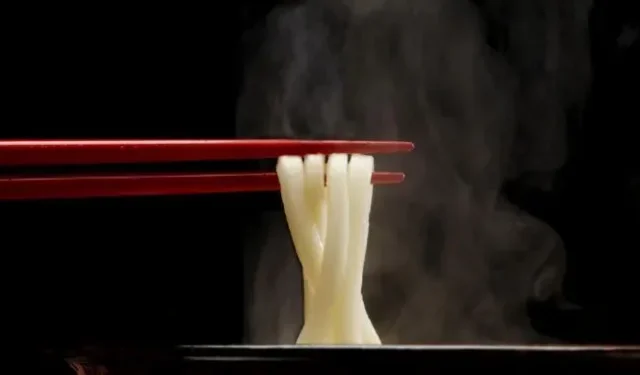Electric chopsticks use electricity to make food 50% more salty

According to the FDA, the average American eats 3,400 mg of sodium per day, despite the Dietary Guidelines for Americans recommending less than 2,300 mg per day. If you cut down on salt to about a teaspoon a day, your taste buds will weep with dullness, but what if you could enjoy less salt shaker and more dishware?
Japanese food, beverage and pharmaceutical company Kirin recently announced that it and a team of researchers have developed a “chopstick device”that uses electrical stimulation to make food taste 50 percent saltier than otherwise.
The “device”qualifier is probably here because these aren’t regular chopsticks. They come with a cable that plugs into a power source, making them bulkier than regular chopsticks, not the kind of utensils you’d expect to get with free shipping.
The chopstick device, built by researchers at Meiji University’s Dr. Homei Miyashita Laboratory of the Department of Frontier Media Science School of Interdisciplinary Mathematical Sciences in collaboration with Kirin, uses what the team calls “electric taste sensation”that uses such weak electricity. that it will not “affect the human body,”Kirin said in an April 11 statement.
According to Kirin, electricity “regulates the function of ions such as sodium chloride (which is the basis of salty taste) and monosodium glutamate (which is the basis of sweet taste) to change the perception of taste. make food taste stronger or weaker.”
The study involved 36 people aged 40 to 65 years. The researchers used a chopstick device to compare the perceived salinity of a food-simulating gel containing 0.80% salt and another gel with 0.56% salt, representing a low-sodium food. The researchers then looked at the “perceived salinity”of each.
“When tasting samples simulating low sodium food, perceived salinity was increased by 1.5 times when the engineered electrical stimulation waveform was applied to the chopstick device, compared to no electrical stimulation,” Kirin said in the announcement.
“Furthermore, the study confirmed that the intensity of the salty taste of the low-sodium food-simulating sample was the same as that of the conventional food-simulating sample when electrical stimulation was applied… is consumed, a device equipped with this technology can provide a salty taste. equivalent to the taste of regular food.”
The researchers also used the device with “reduced sodium miso soup”but produced no results. Kirin’s statement also did not mention whether the researchers were studying how the chopstick design affects subjects’ perception of the saltiness of sodium-free food.
The technology could also find applications in other types of utensils, such as spoons and teacups, Kirin says. Given the need for a power source, they will need additional storage space. But if there was a utensil that could make every bite of low-sodium food even tastier, it might be worth making room for it in your cupboard (how often do you use that blender anyway?).
No plans to sell the chopstick device or any utensils using this technology have been reported. Instead, Kirin’s statement vaguely indicated that Miyashita’s company and lab plan to use the study “to provide mental satisfaction from a richer perceived taste as well as nutritional health benefits for those on a low-sodium diet.”
Leave a Reply